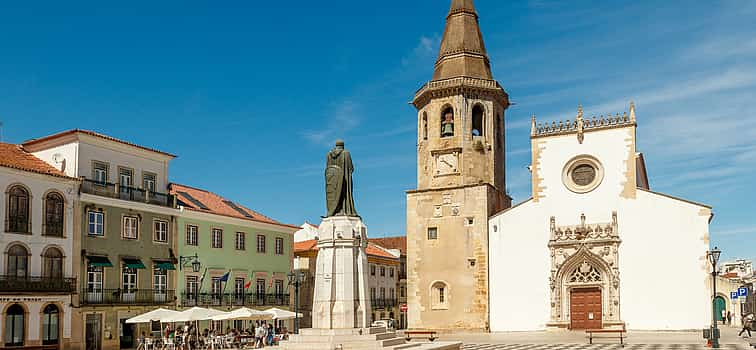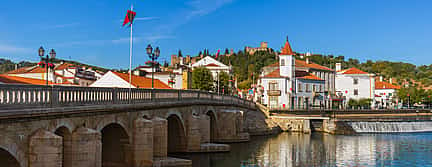


Tomar and the Knights of Templar History Private Tour in Lisbon, Portugal
This tour takes you around the history and the locals that Templar's Knights lived up to the end of this military and religious order. We will visit Almourol castle, the amazing city of Tomar, the synagogue of Tomar, as well as the city of Tomar. On this day we will follow the trail of the Templar knight's, a Christian military order that played a massive role in Europe and the Middle East.
Highlights:
Almourol castle
the city of Tomar
synagogue of Tomar
the Templar history
Includes:
driver(guide)
hotel pick-up and drop-off
transportation by a/c vehicle
light refreshments
skip-the-lines
Not included:
lunch
entrance fees
Please note: the price for a group of 2 people is 150 Eur per person. The price for each additional person (more than 3 people) is 110 Eur. Maximum 6 people. We pick you up at your hotel in Central Lisbon (check the availability).
The origin of Tomar Castle is closely tied to the beginning of the Portuguese kingdom and to the presence of Knights Templar in the Iberian Peninsula - at the time mostly occupied by Islamic kingdoms. This was the time of the Crusades and the peninsula was recognized as a Crusade land just like Palestine. In this context, the Knights Templar take an active role in the formation of new Christian kingdoms in the Iberian Peninsula. The Knights Templar came to Portugal in 1128. In 1159, King Afonso Henriques awarded them a vast territory situated halfway between Coimbra and Santarém, known as Termo de Ceras, as a reward for their role in the conquests of Santarém and Lisbon (1147). The Knights Templar founded the Tomar Castle and Village in this region. As a result of the persecution against the Knights Templar by Philip IV of France, the Order was extinct in 1312 by Pope Clement V.
In the middle of the River Tagus, the enigmatic Almourol Castle is one of the most emblematic monuments of the Christian reconquest. Situated on an island in the middle of the River Tagus, Almourol is one of the most distinctive castles in Portugal, because of its historical significance and surrounding landscape. Its history reminds us of the Reconquest of Portuguese territory during the Middle Ages. When the Christians arrived here in 1129, the castle already existed under the name of Almorolan, having been incorporated immediately afterwards into the land that was placed under the protection of the Knights Templar, whose Master at that time was Gualdim Pais.
The Tomar Synagogue is the only proto-Renaissance Hebrew temple in our country. The quadrangular plan and the vaulted ceiling, resting on columns and inlaid consoles, reveal eastern influences. It was built in the 15th century and IMG 6883 compress closed in 1496, when the Portuguese Jews were expelled from the country. It was later turned into a prison and in the 17th there is a reference to it as the S. Bartolomeu Chapel. In the 19th century it was used as a barn, a granary, a goods warehouse and a storage room. Only in 1921 was it possible to restore its lost dignity when it was classified as a National Monument. Samuel Schwarz, a Polish Jewish researcher into Hebrew Culture, saved it from the chaotic state it was in by acquiring it in 1923 and donating it to the Portuguese state in 1939 to house the Abraão Zacuto Luso-Hebrew Museum.